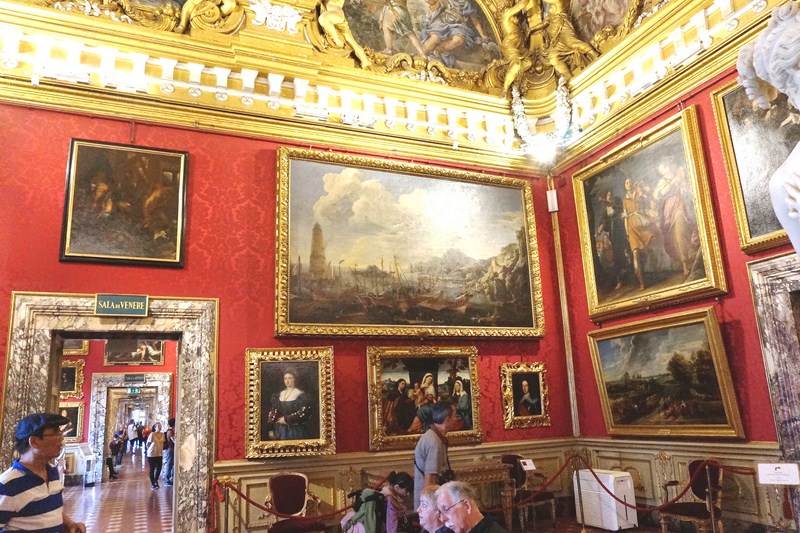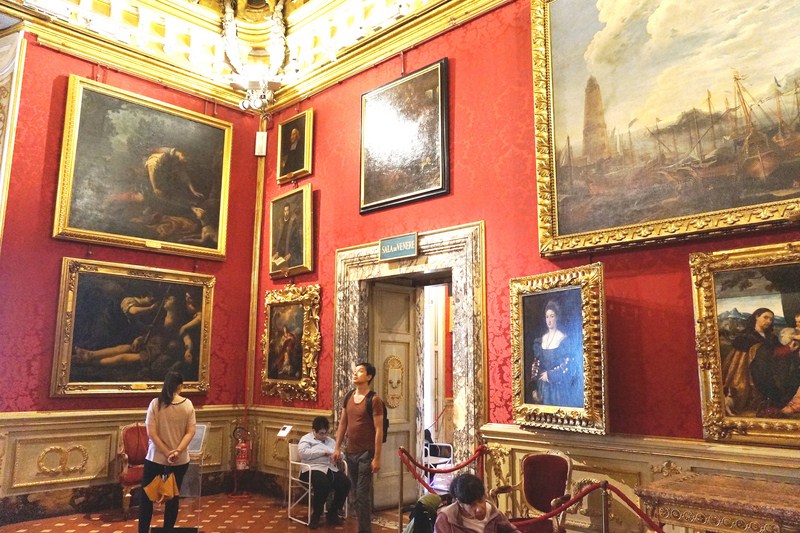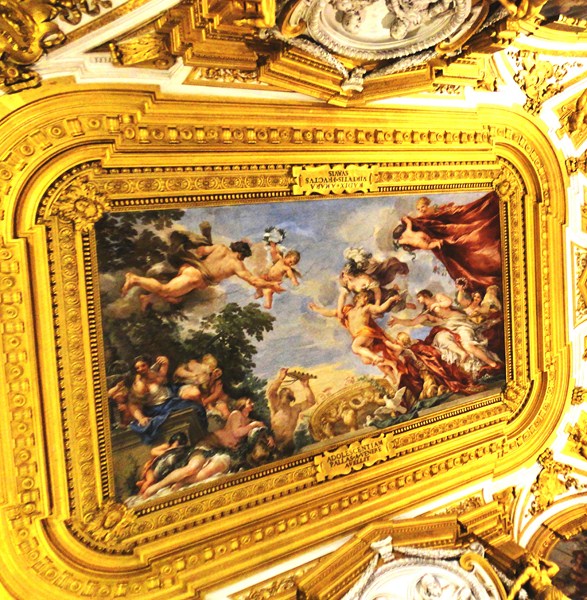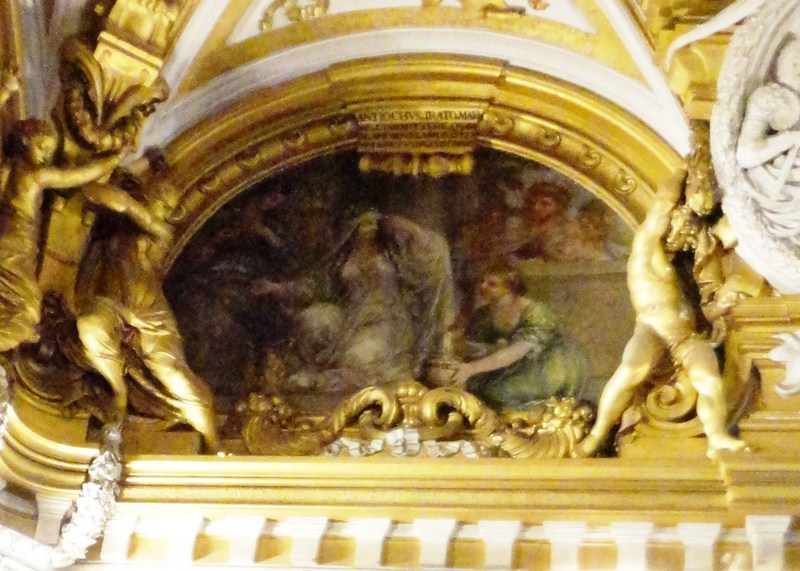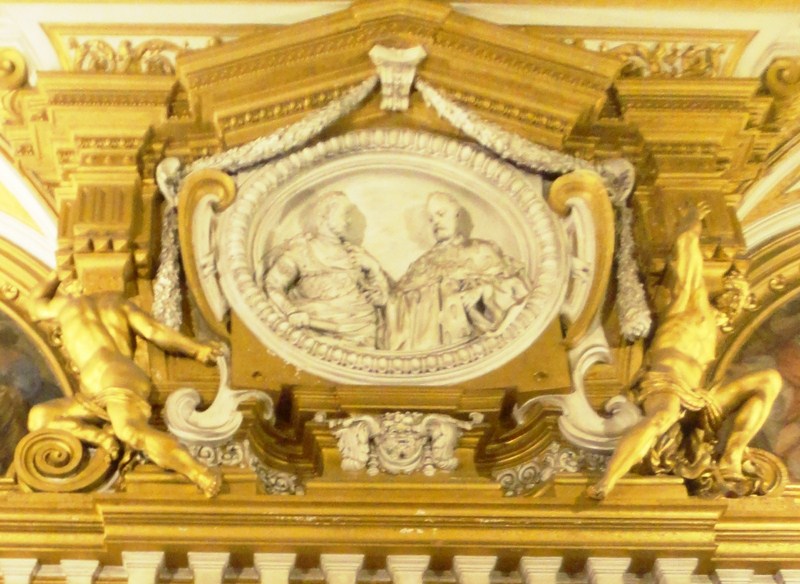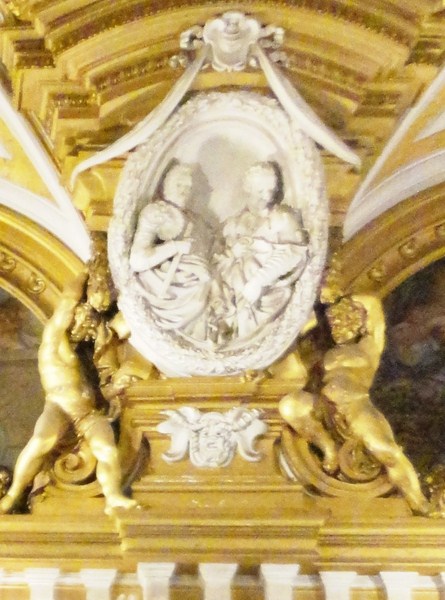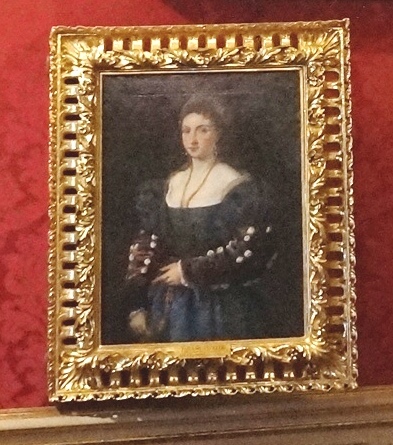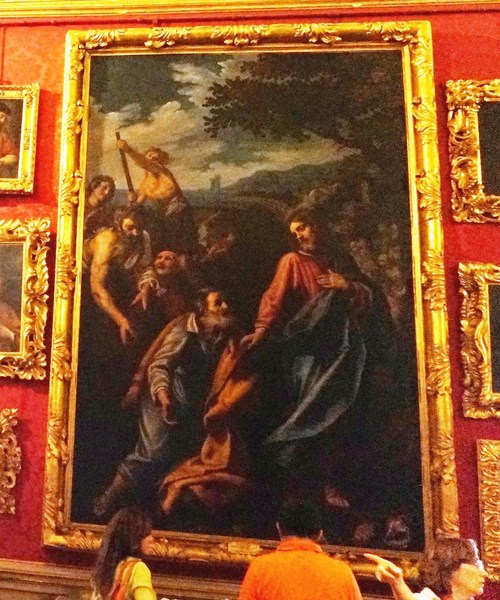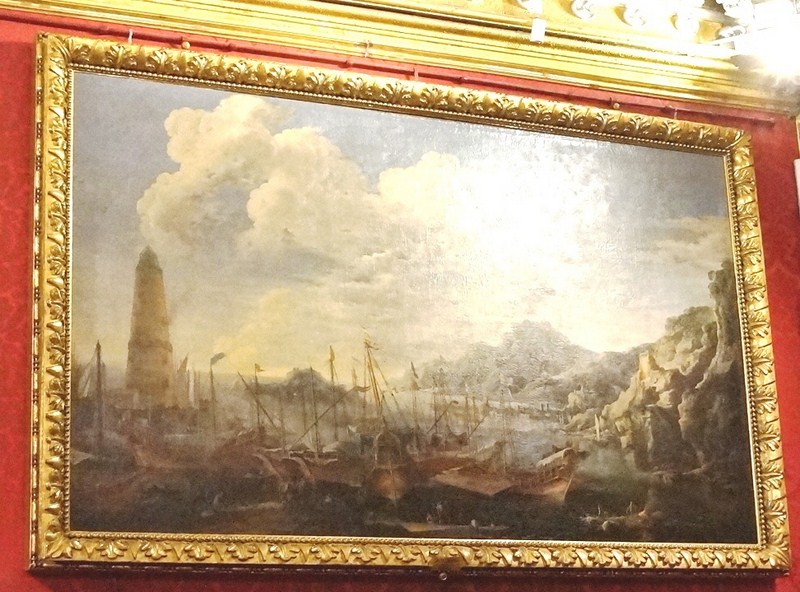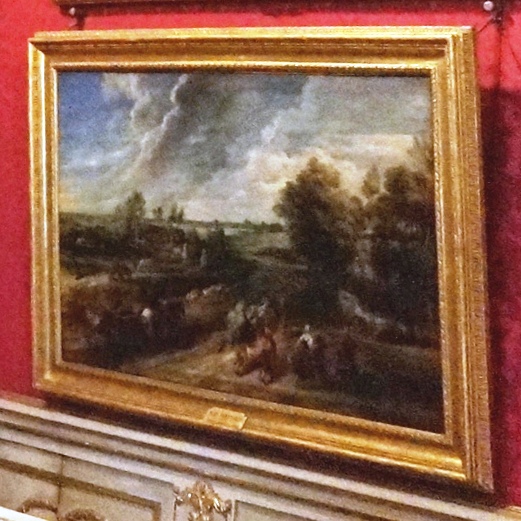The Hall of Venus (Sala di Venere) starts the series of elegant rooms in the winter apartment on the first floor of Palazzo Pitti. This famous great hall, in Medici times, was the general antechamber where, before being received by the Grand Duke, the common public waited to be admitted.
On his return to Florence in 1641, Pietro da Cortona, commissioned by Ferdinando II de’ Medici (who wanted to show that he has aligned himself with the new Baroque decorative style), decorated the hall with frescoes and stuccoes from 1641 to 1642, the first of the series of so-called Planetary Rooms to which he put his hand (for this reason, it is entirely autographed).
The iconographic Medici residence celebration programme, aimed at exalting the figure of the prince and the process of preparing him to govern well, featured a decorative theme proposed by Francesco Rondinelli (the grand duke’s librarian).
It involved the constant presence of all three key players in the rooms – the prince, Hercules (a symbol of the virtues of the prince and protector of the Medici family) and the gods of Olympus (Venus, Apollo, Mars, Jupiter and Saturn representing the Ptolemaic planets) to which the room is dedicated.The lively fresco in the ceiling vault depicts, in the center, Minerva tearing the young adolescent prince from the arms of Venus (a symbol of pleasure) and then handing him over to Hercules (a symbol of virtue), his new tutor.
Stories from antiquity, linked by the theme of the virtuous behavior of illustrious men in front of beautiful women, are frescoed at the eight lunettes, all bearing explanatory inscriptions in Latin. Behind the lunette with the Story of Antiochus and Stratonice is a small window inserted between the stuccoes so that the Grand Duke can spy on and listen to what happened or was said in the room below.
Standing out, from the very rich white stucco ovals (tondi), are portraits of the most illustrious of the most important members of the grand duchy, as well as the two popes of the House of Medici (Leo X and Clement VII). Their personal emblems are found at the segments of the pendentives.
With respect to the Renaissance construction, the change of spatial organization is felt less. Although softened by the presence of the gilt stucco telamons and the white stucco medallions, the pattern of the lunettes, of the rib vaults and pendentives follow a pattern that still reflects the order of the Renaissance interior.
Standing at the center of the room, placed well after the room had taken its name, is the famous statue of the Venere Italica (Italic Venus, 1804-1811) by Antonio Canova, a compensation to Florence for the transfer of the Medici Venus (a work that was later returned) to the Louvre by Napoleon.
On display are four masterpieces by Titian. Concerto (ca. 1506-1507) is an early work. The Portrait of Julius II is a copy of the original by Raphael (now at the National Gallery in London ) but different in the results, especially linked to the masterful use of the typical color of Titian. La Bella (a painting for the Duke of Urbino, 1536 ) and the Portrait of Pietro Aretino (1545) fully manifests the chromatic richness and stylistic complexity of the works of the master’s maturity, for example with the contrast between the reds of the beard and the blue of the robe that exhales the figure and a disturbing nuance to the character, shot shyly in profile.
The Return of the Peasants from the Fields (ca. 1627) and Ulysses on the Island of the Phaeacians (ca. 1635), two grandiose and solemn landscapes, are a reference to Pieter Paul Rubens (the ideal teacher of Pietro da Cortona and the Flemish equivalent of Titian).
Finally, Marina del Faro with Vessels and Galleys (ca. 1641) and Marina del Porto at Sunset (ca. 1641), two large marinas painted by the famous Neapolitan landscape painter Salvator Rosa, are noteworthy.
Other works in the Hall of Venus include:
- Portrait of Antonio Martelli (Caravaggio, 1608–1609)
- Portrait of Giacinto Calducci (follower of Justus Suttermans)
- Male Portrait (16th century Emilian school)
- Santa Martina Refuses to WorshipIidols (Pietro da Cortona)
- Portrait of Hunters of the Medici Court (Justus Suttermans, ca. 1637)
- Sacred Conversation with Constantine, Saint Helena and Saint John (Bonifacio Veronese, ca. 1510)
- Triumph of David (Matteo Rosselli, ca. 1620)
- Roger at the Court of Alcina Rutilio Manetti, 1624)
- Martyrdom of Saint Catherine of Alexandria (Francesco Bassano, ca. 1590)
- Apollo and Marsyas (attributed to Giovanni Bilivert)
- Apollo and Marsyas (Guercino, ca. 1618)
- Portrait of Baccio Valori (Sebastiano del Piombo, ca. 1531)
- Venus, Cupid and Vulcan (Tintoretto, ca. 1550-1555)
- Portrait of Pietro Francavilla (17th century Flemish school, ca. 1610)
- Allegory of Lies (Salvator Rosa, ca. 1649)
- Male Portrait (Bartolomeo Passerotti, ca. 1570)
- Portrait of an Artist (Justus Suttermans)
- Portrait of Vittoria della Rovere as Saint Ursula (attributed to Justus Suttermans, ca. 1637)
- Portrait of a Child (Justus Suttermans, ca. 1631)
- Portrait of Alessandro Farnese Justus Suttermans, 1639-1640)
- Ecce Homo (attributed to Titian)
- San Giuseppe (Guercino, ca. 1660)
- Adoration of the Child (workshop of Titian)
- Vocation of Peter and Andrew (Il Cigoli, 1607)
- Sant’Isidoro Agricola (Giovanni Bilivert, ca. 1612-1615)
- Saint Joseph (Guido Reni, ca. 1639-1640)
- Mystical Marriage of Saint Catherine of Siena (Sienese school of the seventeenth century from Francesco Vanni)
- Narcissus at the Source (Francesco Curradi, ca. 1622)
- Death of Saint Mary Magdalene (Rutilio Manetti, ca. 1618-1620)
- Table (Florentine manufacture of the century XVIII, 1785-1791)
- Table (Florentine manufacture of the century XVIII, ca. 1789)
- Table (Florentine manufacture of the century XVIII, 1785-1791)
Hall of Venus: First Floor, Palatine Gallery, Pitti Palace, Piazza de’ Pitti, 1, Florence, Italy. Tel:+39 055 294883. Open Tuesdays-Sundays, 8:15 AM – 6:50 PM. Admission: Palatine Gallery (€8.50), Silver Museum (€6.00), Gallery of Modern Art (€8.50), Costume Gallery/Porcelain Museum/Boboli Gardens/Bardini Garden (€6.00).
How to Get There: Take the C3 or D bus to the Pitti stop.

